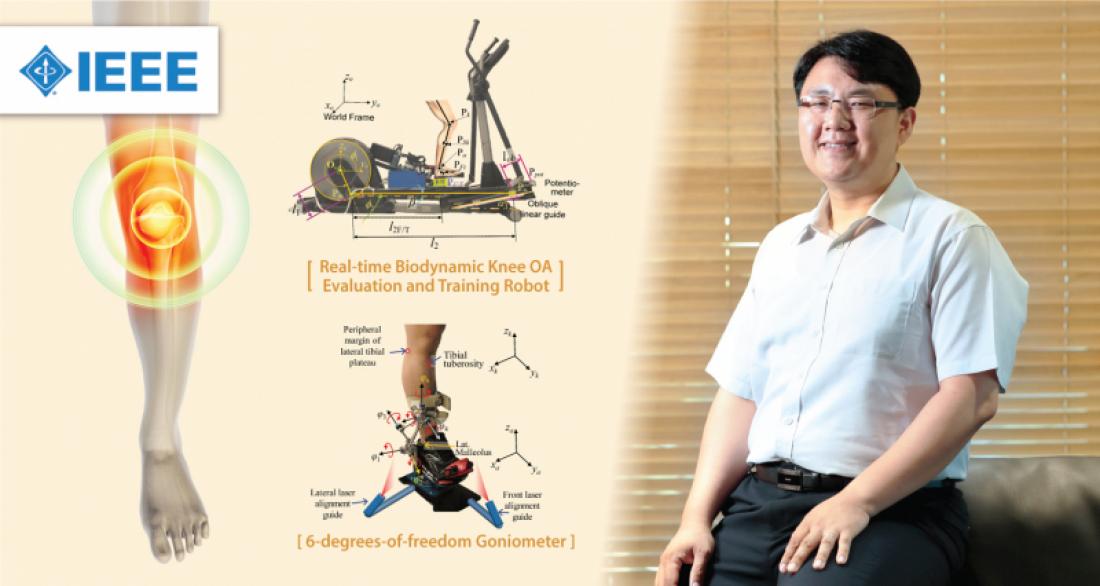Professor Sang Hoon Kang in the School of Mechanical Aerospace & Nuclear Engineering at UNIST.
A research team, affiliated with UNIST has presented a system that can quantitatively complement the diagnosis of knee arthritis, which was performed only by x-ray and doctor’s judgment. This real-time data analysis is expected to help the non-surgical treatment and rehabilitation of knee osteoarthritis patients.
This breakthrough has been led by Professor Sang Hoon Kang in the School of Mechanical Aerospace & Nuclear Engineering at UNIST. In collaboration with the researchers from Korea Institute of Science and Technology (KIST), University of Maryland, and the Weill Cornell Medical College at Cornell University, the team developed a system to diagnose knee arthritis while walking, and to correct treatment and rehabilitation in real time through gait analysis.
Knee osteoarthritis is a disease in which the knee cartilage is worn down due to a lot of force applied to the knee joint for a long time. It was difficult to objectively judge various symptoms such as pain only by the existing 5th grade diagnosis method based on conventional X-ray reading and doctor’s opinion.
In the past, the rotational force of the knee adduction was measured in the motion analysis room, but it was difficult to be utilized because it puts a lot of burden on the patient through the long time data collection and processing process using expensive equipment.
A modified elliptical trainer: (a) sagittal plane view of the elliptical trainer with the right leg and (b) a subject on the elliptical trainer wore a compact and inexpensive 6-degrees-of-freedom goniometer on her/his right leg.
Professor Kang and his research team combined robotic systems with neurobiological mechanics to create robotic systems that can be used in facilities that can be installed anywhere. By measuring the force on the foot of the exercise equipment and the ankle movement while the patient is walking, all the forces on the knee joint can be calculated in real time to determine the severity of arthritis.
Since the force applied to the joint and the rotation of the adduction rotation can be identified in real time, the patient can be guided by an efficient gait method, which can be expected to develop a non-surgical treatment and rehabilitation method.
The system can be deployed at a lower cost than the existing motion analysis room, and data collection and analysis can be performed in real time to provide objective data to complement the diagnosis of knee arthritis. Besides, it is also expected that real-time gait analysis can help patients with the treatment and rehabilitation they need.
“This technology can provide diagnostic assistance and advanced biofeedback rehabilitation training through the provision of objective data for patients with knee arthritis,” says Professor Kang. “It will also contribute to the opening a new chapter in customized robot rehabilitation customized for patients and obstacles at Ulsan Public Industrial Hospital and rehabilitation hospitals.”
The findings of this study have been published in the June 2019 issue of the IEEE Transactions on Neural Systems and Rehabilitation Engineering. This work has been supported through the Research Program for Rehabilitation Robots by the National Rehabilitation Center (NRC), the Individual Basic Science & Engineering Research Program by National Research Foundation (NRF), and the National Institute on Disability, Independent Living, and Rehabilitation Research (NIDILRR).





